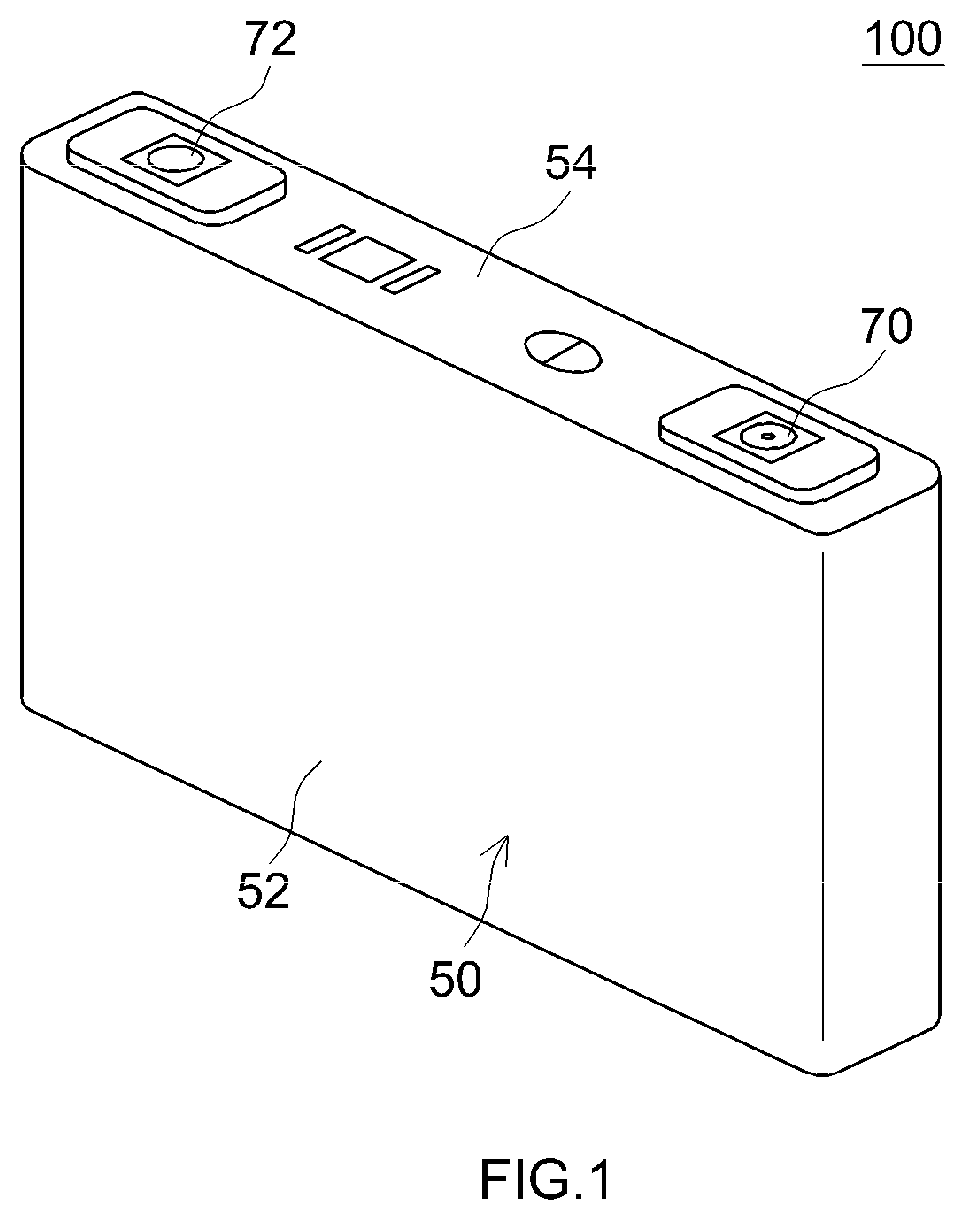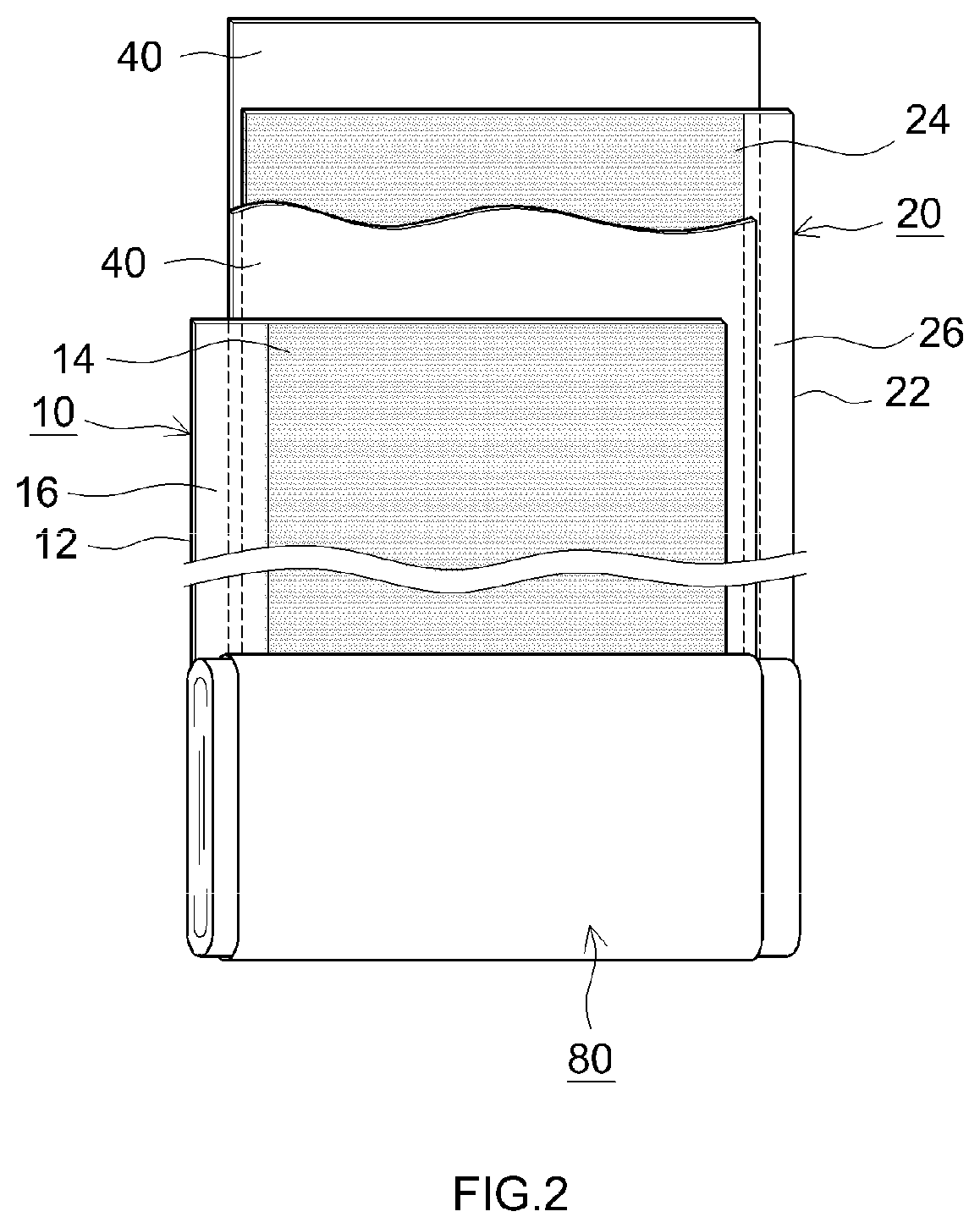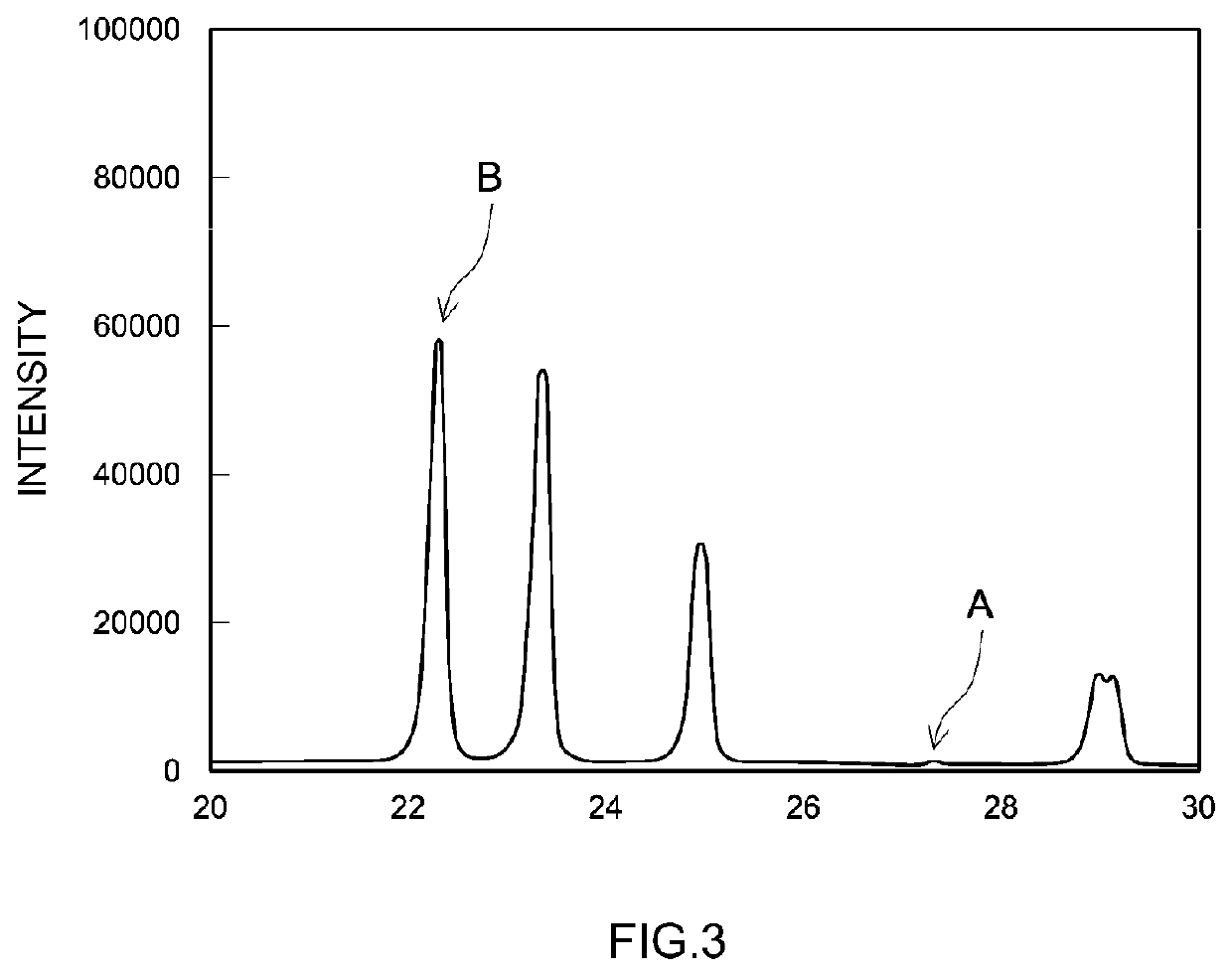Nonaqueous electrolyte secondary battery
- Summary
- Abstract
- Description
- Claims
- Application Information
AI Technical Summary
Benefits of technology
Problems solved by technology
Method used
Image
Examples
Example
Test Example
[0038]Below, Test Example on the present disclosure will be described. Incidentally, the contents of Test Example described below is not intended to limit the present disclosure.
[0039]In the present Test Example, four kinds of lithium ion secondary batteries (samples 1 to 4) having different abundance ratios (IA / IB) of Li3PO4 and LiH2PO4 in the positive electrode mixture material layer were prepared, and the heating value upon overcharging each sample was evaluated.
1. Manufacturing of Each Sample
[0040]First, a mixture including a positive electrode active material, Li3PO4, LiH2PO4, a conductive material, and a binder mixed therein was manufactured. Then, the mixture was dispersed in a disperse medium, thereby preparing a paste-shaped positive electrode mixture material paste. Incidentally, in the present Test Example, as a positive electrode active material, lithium nickel cobalt manganese composite oxide (LiNi0.33Co0.33Mn0.33O2) was used. Further, acetylene black (AB) w...
PUM
 Login to View More
Login to View More Abstract
Description
Claims
Application Information
 Login to View More
Login to View More - R&D
- Intellectual Property
- Life Sciences
- Materials
- Tech Scout
- Unparalleled Data Quality
- Higher Quality Content
- 60% Fewer Hallucinations
Browse by: Latest US Patents, China's latest patents, Technical Efficacy Thesaurus, Application Domain, Technology Topic, Popular Technical Reports.
© 2025 PatSnap. All rights reserved.Legal|Privacy policy|Modern Slavery Act Transparency Statement|Sitemap|About US| Contact US: help@patsnap.com



